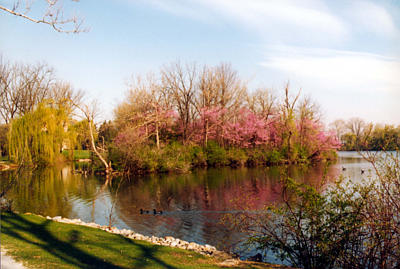
A Cave of Candles / by Dorothy V. Corson

Chapter 19
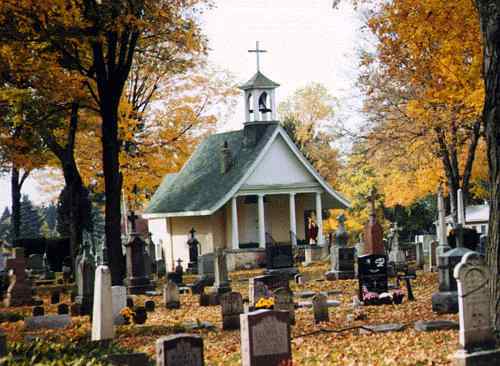
Untimely Deaths on Campus
In disproving the so-called "curse on the lakes," I had not only acquired more related information on my research but I had also obtained the records needed to complete the University Archives Accidental Deaths file. The one death a year in the lakes, reported in the news article, was not even close to being accurate.
Of the many untimely deaths on campus, the saddest were the suicides because they shouldn't have happened, and they seemed so unnecessary. I'm reminded of a comment concerning suicide that left a deep impression on me when I read it. "There are so many people out there with terminal illnesses, waiting to die, who would give anything for the healthy body they threw away."
One student in 1901 in a friendly tussle with another student knocked him down with such force that the other student lay stunned on the ground. Thinking he had killed him, he raced back to his dorm and taking a pistol out of his trunk killed himself. The injured student had a broken leg.
Another suicide in July of 1929, was a 35-year-old woman, who lived on Douglas Road adjacent to the campus. Depressed, after being injured in a fall from a horse, she felt she was a burden to her family. She drank a can of lye, walked across the road, and drowned herself in St. Joseph Lake.
Yet another happened on a sunny Sunday morning in July of 1949. A Notre Dame University Professor, reportedly despondent, took his own life in the community cemetery on campus. He shot himself on the grave of an elderly priest who had died five years before. A chip in the gravestone from the bullet is still there. The newspaper indicated that a note had been found and excerpted from it the words, "I've answered my call." The actual note was not with the Coroner's records as it had been in Bernadette's case. One could only wonder if the note had produced a motive for his actions.
I learned that the grave he chose was that of a former teacher, priest, and Director of the department in which he had been a Professor for 26 years, who had also hired him. There were twenty years between their ages. He was known to be a special friend, perhaps even a father figure, a mentor and ally to him and to many other professors on campus. The professor had been known to go to the grave before. One could only wonder why he chose this particular place to end his life.
Like the earlier Bernadette suicide note, it haunted my thoughts until one day I shared the story with an elderly Sister friend who, unbeknown to me at the time, had taught the professor's daughters and knew the niece of the priest upon whose grave he was found. She knew them both by reputation and through the daughters, her students. In reviewing the last evidence,(211) I had found with her, she told me that from what she knew of both men there was no doubt in her mind at all why he chose his grave to end his life.
The priest, she said, was highly regarded, a very kind, compassionate and charitable man who was known for his brotherliness. Had the priest been alive, she felt, the professor would have gone to him as a friend. Whatever the reasons that drove him to it, in her mind, and from her knowledge of both men, she was convinced he chose his grave because he could not turn to his family and his priest friend was the only one he knew who would understand the act of taking his own life.
When I asked her what she thought he meant by the words, "I have answered my call," she suggested something I hadn't thought of, "I have done my duty, it is time to go. Seeing the situation through her compassionate eyes, had cut through all my worldly, reasoning.
Why would this particular death matter to me? Like the earlier mentioned Bernadette, I really don't know myself, except the tragedy of it disturbed my thoughts and I had to put them to rest. I wondered why, too, until one day I came upon this interesting 1873 explanation that seemed to speak to my feelings about it:
The Ghost [spirit] often plays a very important part in tragedy and frequently reveals a secret which would otherwise remain concealed; but they do not necessarily appear upon the stage.(212)
Could it be the ghost of this man's memory nudging me to seek answers to the enigma of this particularly puzzling loss of life to put his soul at rest. Who can say? To me, it was another bundle that had been dropped on my doorstep and I felt moved to do whatever I could to comprehend it, for my own peace of mind, if nothing else.
From what I have learned about him, I am convinced, he became a casualty of the war years and changing times. And he was not alone in his dilemma. He was a good man caught in an unfortunate situation, with, to him, no future, and no foreseeable solution to his problems in sight. He had simply chosen a safe quiet place, on a campus that was home to him, where he had spent half his life, near the friend who had nurtured him and his career, and in a remote place where his family would not be constantly reminded of it.
Having gone as far as I thought I could in putting this latest mystery to rest, I was about to put it behind me when, through an extraordinary coincidental circumstance, the last missing piece of the poignant puzzle was passed on to me. A most unusual letter written by the Professor to a student almost seven years prior to his demise in 1949 surfaced during my research. The letter indicated that the father of a young student, who lived some distance away, had entrusted his son to the Professor's care.
The professor spoke his heart to the student in a very honest and forthright way revealing his compassionate and feeling nature in the letter. In reading it, and noting the date it was put in the archives, I knew why I had been moved to pursue this latest mystery.
The 1942 letter was placed in the archives by a priest 50 years later in 1992 just months before I began researching the coroner's records. The timing alone had to mean the letter had a story to tell. Looking back, I can see now, how the stage was being set for it to cross my path one year later -- just in time to supply the last pieces in this puzzle.
Fortunately, the priest who had placed it in the archives was still on campus. I felt Providence smiling on my sincere searching in the good energy being projected over the telephone through a compassionate stranger I have yet to meet. I shook my head in wonder at the story he had to tell me, amazed that once again, the Notre Dame Grotto had been a part of this tragic drama being played out on the University campus fifty years later.
He said he was strolling by the Grotto one fall day in 1992 when he noticed a young man praying at the Grotto. He told me that over the years he has developed a feel for people in trouble, and sensing this young man was under a lot of stress, he lingered nearby just in case he might be needed.
It wasn't long before they struck up a conversation and the young man began telling him what was on his mind. He was a bit hazy about the particulars, since it had been two years since their encounter, but it had something to do with a letter that belonged to this man's father. It had come into his possession, either by his father's death or some family crisis. The family felt it should not be in their hands any longer, that it belonged at Notre Dame. He was asked to deliver it to the University. He was there that day to keep his promise and their chance encounter must have seemed like an answered prayer. He asked the priest to meet him at the Grotto after the football game so he could pass it on to him. A time was agreed upon and the letter finally found its way into the Professor's archival papers half a century after it was written.
However this was not the end of this unusual sequence of events. I was surprised to receive a phone call from this same priest the next day. He told me that shortly after he had relayed his strange encounter at the Grotto to me, he and another priest friend, who knew about my research, happened to be sharing a table with a third priest who was on campus for a short visit before returning to Colorado. My two priest friends were discussing the incident, wondering if anyone had actually witnessed it, when unexpectedly, the visiting priest joined in the conversation.
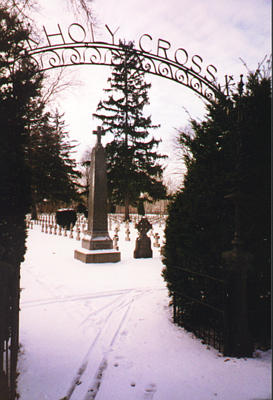
I can just imagine their surprise when he told them he had the answer they were seeking. It was he who had anointed him and he remembered it well because he had just been ordained that week and it was his first anointing. He then explained that passing students had seen the man and, seeing a priest walking by, ran to him, to tell him there was a man lying on a tombstone in the cemetery and he was either drunk or ill. He said he followed them to the cemetery and as he approached the scene he said he noticed a postcard on his lap. One look and he knew the man was dead or dying. He ran back to get his anointing oils. He said he had only glanced at the front of the card and did not see what was written on the other side but suspected it was a suicide note.
Afterwards, he said he heard that the Professor had been seen earlier at the post office purchasing a postcard and addressing it. It was thought that he must have gone directly to the cemetery from there. It put a strange twist on an already puzzling tragedy.
The postcard was addressed to the priest upon whose grave he was found, in care of the Holy Cross Community Cemetery. On the back of it was the rest of the simple one line message: "I have answered my call . . . I'm coming to see you."
**********
Another incident in 1986, a double suicide, in the grad student apartments occurred when an East Indian student's doctoral thesis was turned down. Despondent over this rejection he and his wife took their own lives by drinking cyanide.
It is difficult to understand why many of these seemingly senseless deaths by suicide even happen. As someone has said, it's such a permanent solution to a temporary problem -- the loss of hope. The dictionary definition of hope may shed some light on this ever present problem: "A person or thing that expectations center in."
The thought occurred to me that perhaps a psychiatrist's study or a thesis based on suicide notes might bring additional insight to the treatment of depression and despair. If nothing else, trying to fathom the different reasons why people experience the loss of all hope for the future and feel driven to end their lives because of it might bring understanding to the problem. These unusual examples of desperation and loss of hope were only a few of those recorded.
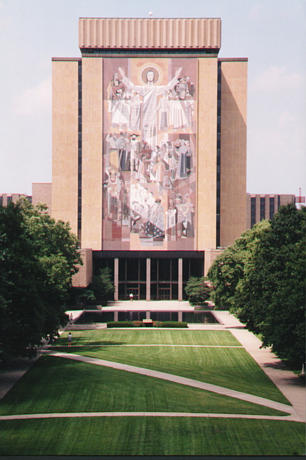
In 1963, during the building of the Hesburgh Memorial Library, a 21 year old Notre Dame student, a junior, was killed when he fell, or jumped, from the tower of the library when it was under construction. No one seemed to know for sure what had happened. I learned from a campus chaplain, who was there at the time, that the coroner was uncertain whether it was an accidental fall or suicide until the family arrived and convinced him it was not suicide, that he was a climber. That he had already climbed two other buildings on campus. I added this previously unrecorded information to my archival record.
Later, I learned that climbing the buildings on campus was a tradition. An elderly cleaning woman told me she'd often heard the students speak of it over the years. It was a passing comment I didn't think too much about until I ran across a 1911 Alumnus reminiscing about those early days in an amusing article in a 1933 Notre Dame Alumnus. Prep school went from ages six to seniors. Only those who had spent 5 years at Notre Dame were eligible to join the Lifer's Club. The article was entitled "Confessions of a Lifer". It was written by George D. Heller."
Adventures which attract boys are sometimes incomprehensible to those a little older, so the blase collegians of today would doubtless marvel to know how industriously we Carrollites explored every nook and cranny of the Notre Dame of our day. We burrowed endlessly in the tunnels underground and under buildings where ran the heating system and piping; we climbed tirelessly through the maze of ironwork framing the dome, to emerge smeared with grime and coated with cobwebs, in the rare ozone at the very feet of Our Lady's statue; we scrambled like monkeys around the leaden gutters of the main building, five or six stories above the ground -- there were few locks which foiled us as we returned from our (to be honest) rare night 'skives' into town, but if we were barred from our own hall, we nonchalantly second-storied our way into the infirmary and slept until the tinkle of approaching glasses of 'salts' bade us escape. We stole apples from the storage rooms north of the main building and buns and cookies from the bake shop, and we knew where the wine cellars were, but were not interested . . . .(213)
I found a later reference to this, climbing the dome tradition, in the first issue of the Notre Dame Alumnus magazine published in 1923 under the heading, "Traditions." It capsules another version of these boyish escapades:
Dig out for yourself the old legends once passed from man to man after the lights went out. Learn of the sycamore tree of the Indian's vengeance . . . . The Grotto, the Log Chapel, the corners of the church -- to know Notre Dame from the statue on the dome, to the tip of the church spires and down into the steam tunnel under Corby Hall! Knowing it inside and out and cramming oneself full of its every particle has left it loved by others, and they have gloried in it.(214)
I inquired of Peter Lysy if he had ever heard of this tradition. He told me he had run into evidence of it in their records. That some had left graffiti in their attempts to reach the top of the dome but it was now a thing of the past because of the tight security to prevent it. No doubt the student's unfortunate fall from the library building, in 1963, also had something to do with that tightened security.
I seriously considered leaving this portion of my research out of my narrative, because of the sadness associated with any record of the loss of lives, until I happened to read in Sorin's Chronicles comments made by Sorin on the negative and sorrowful aspects of life. In this case, he was speaking of the not always positive side of Notre Dame's early founding.
On the Gold Dust Trail
One of those negative and sorrowful aspects of Notre Dame's early founding was detailed in an interesting essay researched and written by Brother Franklin Cullin. He called it On the Gold Dust Trail: The 1850 Expedition to California. An excellent account of the grueling trek countless families made to the gold fields of California.
It's a story overshadowed by time, one that, undoubtedly, Sorin deemed better left forgotten. In September, 1849, the University was faced with mounting debts. A decision was made by Sorin to send three brothers -- of their own accord -- to California to dig gold during the California Gold Rush. Two months later their financial situation was worsened by the ravages of a disastrous fire that destroyed three new campus buildings, the apprentices' workshops, the kitchen, the bakery and a large quantity of furnishings and supplies. Sorin had decided not to insure them at the time in order to have money to celebrate the event. The need for funds now became even more pressing.
In a desperate attempt to recoup his financial losses, Sorin -- without the permission of the founding Father in France -- sent seven men to join their wagon to the wagon trains making the trek to California in 1850 after the 1849 Gold Rush. With high hopes a company of four brothers and three layman (one layman the leader of the expedition) set off on the trail to California in February of 1850. The youngest in the company was 24 and the oldest 49.
Four and a half months later, in July of 1850, after untold hardships, the company reached their destination, Placerville, California, in the heart of the Gold Rush territory. The group had arrived but the pickings by that time were slim. The crowded unsanitary conditions were so unbearable that by November the situation had turned grim and disease was rampant. The venture had become a disaster. One brother died of a burning fever at the age of 38. Shortly afterward another lay member of the company also died of the sickness prevailing in the mines. Earlier, in August of 1851, Brother Gatian had reported discouraging facts about the conditions in the area. "One tenth of the emigrants die in California; not more than one out of a hundred will make anything. Those who came through last year and the preceding spring must not be believed: things have changed and the mines are exhausted."
Sometime between September and November of 1850, Brother Gatian withdrew from the congregation. He indicates in his letter that several months earlier, the three laymen also left the company. Their fate was never determined. He, himself, continued in mining for another nine years. Only Brother Justin and Brother Lawrence returned to Notre Dame to resume their occupations. After 16 months spent in California, when they realized there would be no hoped-for riches to present to Fr. Sorin, he instructed them to return to Notre Dame. Any gold they mined was used for living and medical expenses. Of the seven in the company only two Brothers returned in July of 1851. Brother Lawrence became a successful farmer and Brother Justin a shoemaker and porter.
In May of 1860 following an illness with little hope of recovery Brother Gatian left California and returned to his native village in France. In November, shortly after he arrived, he died, still a bachelor at the age of 34. He had planned to leave the order to marry when Sorin included him in the company.
Brother Franklin Cullen, C.S.C., concludes his essay with this interesting observation: "There is no evidence that during the remainder of the years until his death in 1893 that Father Sorin willingly recalled the ill-fated assignment on which he sent the four Brothers in 1850."
Below is the quote mentioned earlier in which Sorin comments about the negative and sorrowful aspects of life. One can only wonder if with these words he was recalling the ill-fated assignment he never mentioned in his lifetime.
This is what he said which bears sharing:
It is doubtless painful to have to record things of such an irreligious nature in the annals of a community; but if those annals are to be considered as a truthful history they must either speak the truth or be silent, unless it be understood that they show only the fair side. But that would not be doing justice to the institute, nor even to the actions of Providence; because unless we see the obstacles and the difficulties of all kinds that have been met, it will not be possible to appreciate the triumph of grace. Moreover, those miseries contain lessons and warnings which will at least not be useless for our successors.(215)
Bearing his words in mind, a summary of those death records obtained seems worthy of a brief recounting here. More Notre Dame and St. Mary's history to pass on, unfortunate events that occurred on the University grounds from its early beginnings.
In the time frame covered, from the first known loss of life in 1849 through September 1994, the following untimely deaths occurred on the campuses (eight were at St. Mary's). With a few exceptions (13 suicides ) all were accidental. I have been told that there was once a myth that there had never been a suicide on campus. If so, then it looks like that myth was shattered with the first suicide mentioned earlier, which occurred at the turn of the century in 1901. Of the 29 recorded drownings, four occurred at St. Mary's. A complete listing of these untimely deaths, newspaper articles and obituaries, are in a Necrology File in this collection. Any other deaths associated with Notre Dame and St. Mary's occurring off campus -- or natural deaths on campus -- are in separate obituary files in the University of Notre Dame Archives.
In 146 years, there were a total of 77 unnatural deaths on campus (accidents, drownings and suicides). The number surprised me and yet it would not have been unusual for a small city such as Notre Dame.(216)
Dealing with the Coroner's death records can be a sobering, thought provoking, experience. Perceiving the agony of loved ones tears in years gone by, underscores the coldness of statistics and the fragileness of human life. We begin to sense our own mortality slipping away. Coz's earlier poem "100 Years to Come" came back to me and a quote of St. James who calls life "but a puff of smoke that appears for a little while and then disappears" (James 4:14). Or as someone else has put it "Life is like a drop of water disappearing in a pond."
All of which, perhaps, serves to point out: Although Notre Dame, like Disney, may have become a magic name -- it is not make believe -- it's a real place where real things happen to real people. A place where dreams can come true. It has weathered fortune and misfortune, tragedy and triumph, all of which, are a part of the reality of the human condition wherever we are. Life would not be life without them. Perhaps it is the weathering of life's vicissitudes that has made that indomitable Spirit that is in the name, Notre Dame.
The Lure of Our Lady's Lakes
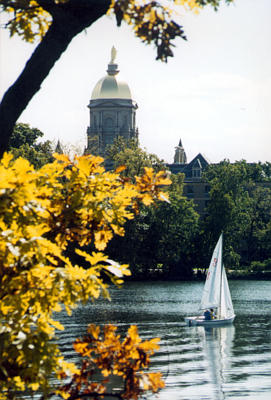
On a lighter note, this segment about the lakes would not be complete without mentioning the lure of its lakes for ice skating, boating, swimming and fishing in days gone by. This quote from the Scholastic, in early April of 1870, emphasizes the lure of Our Lady's lakes in earlier times:
The lakes are now free from ice and open to lovers of fishing. By-the-by, someone reports having seen enormous sturgeons (and even a Gar-pike) in St. Mary's Lake. It is true that some fifteen years ago large sturgeons were put in the lower lake, but having heard nothing concerning them for a few years past, we thought them swept away by freshets [flood waters] or reposing in the depths of the lake. But no, they have appeared again on the surface and from all indications mean to live a few years longer -- that is until some hook interferes with their sport.(217)
It has also been said (nobody knows for sure) that the many large goldfish that were once resplendent in St. Mary's Lake came from students dumping their goldfish bowls there upon leaving. Their presence, I understand, was not good for fishermen, but the surprise of seeing the golden glow they imparted to St. Mary's lake was a unique experience and a delight, I'm sure, to anyone -- from little on up -- who remembers them.
The Undergraduate Manual of 1924/25 acquaints the student with his new environment: (and the fact that Our Lady is the Patroness of every student)
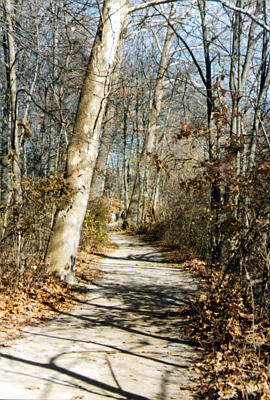
The traditions and legends which form the lore of the old place by the lakes are the things over which men in after-years reminisce, wondering how they absorbed so indifferently in their youth things which are the veriest romance of adventure in retrospect. You are going into these. Some, you will find, seek you out. Others you must discover in the nooks and corners and by-ways of your college life. May devotions are peculiarly attractive to Notre Dame men. Our lady is the patroness of every student. Cultivate devotion to her early. She will assist you in times of trial and need.
Generations of Notre Dame men have trod the paths about and around the lakes. Many a future has been planned on these paths, many an urgent problem solved.(218)
Another campus tale, I happened upon in my research of the lakes, begs to be included. It was told to me by several old timers who related it with a humorous twinkle in their eyes. One could almost see them picturing it in their minds in recalling it:
"Have you ever heard about Brother Bicycle," they asked? I shook my head, and smiled along with them as they recounted this story. Apparently, back in the 1920s one of the Brothers took it upon himself to patrol St. Joseph Lake, the fishing and swimming lake, to keep out people who were fishing or swimming without permission (half the drownings in the lakes were townspeople). As time went on Brother Bicycle became more and more proprietary about the lake and even carried a pistol to announce his authority. No one seemed to know by whose authorization he made these regular excursions around the lake.
As the story goes, one evening he was making his usual patrol when a bicycle rider whizzed by him, much faster than he deemed proper. "Slow down, me Bucko," he shouted. The bicycle rider ignored him and sped on. His authority questioned, Brother Bicycle pulled out his pistol and fired; no one seems to know if it was aimed harmlessly in the air. Unbeknown to him, the bicyclist was Rev. Charles O'Donnell, C.S.C., Provincial and later President of the University. Suffice to say, it was the last time Brother Bicycle ever packed a pistol.
